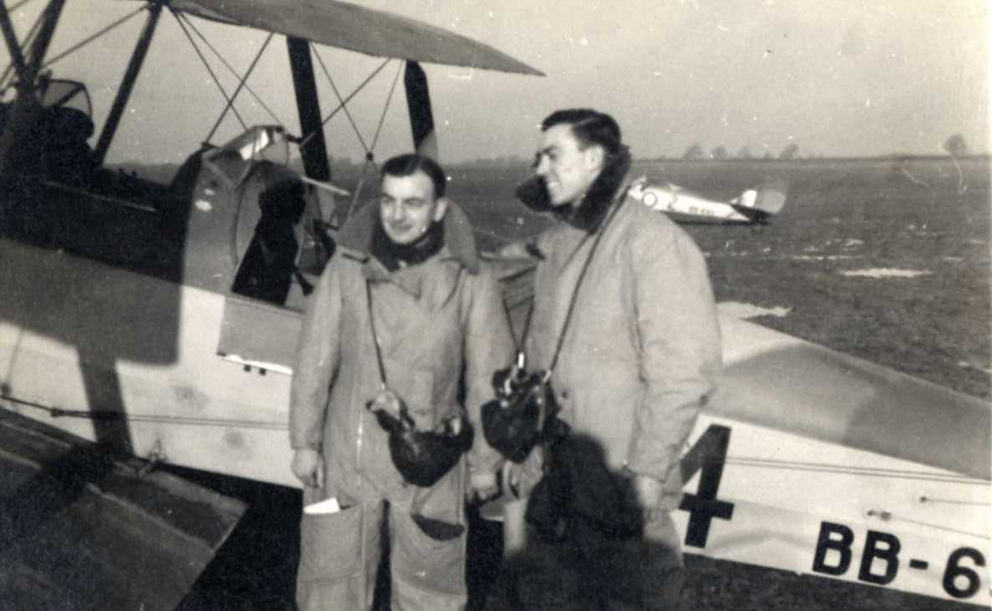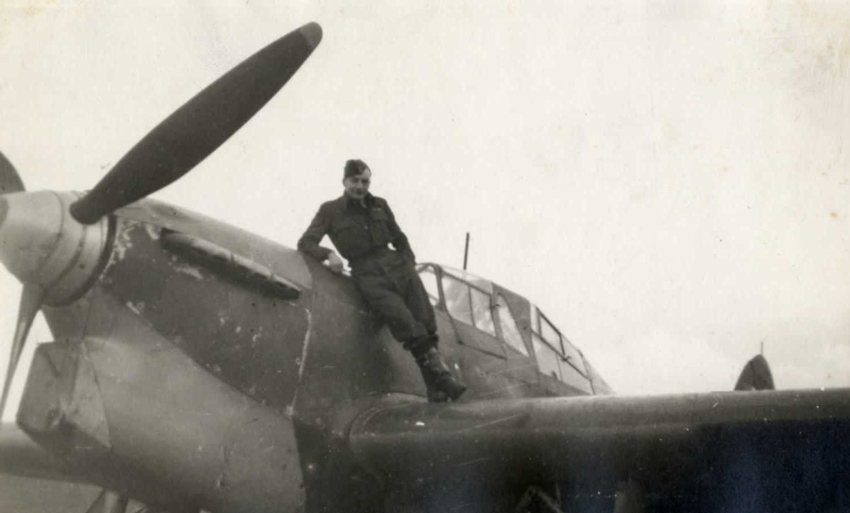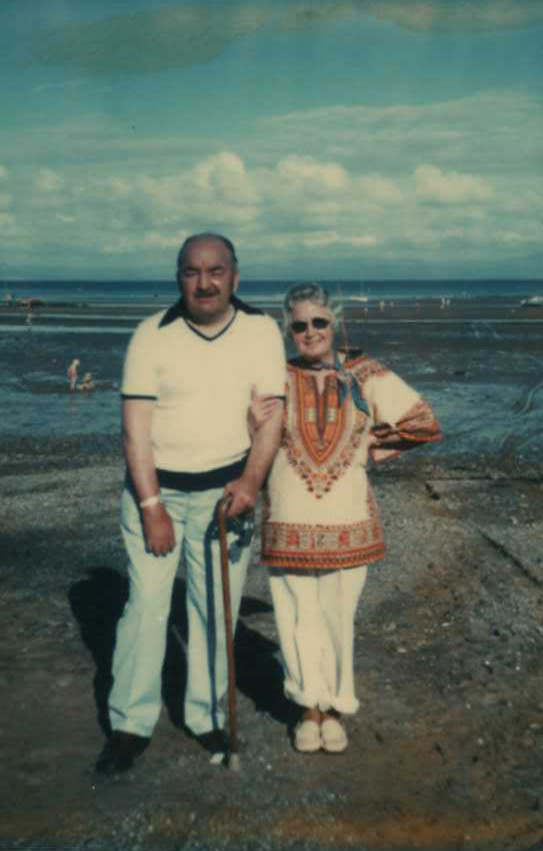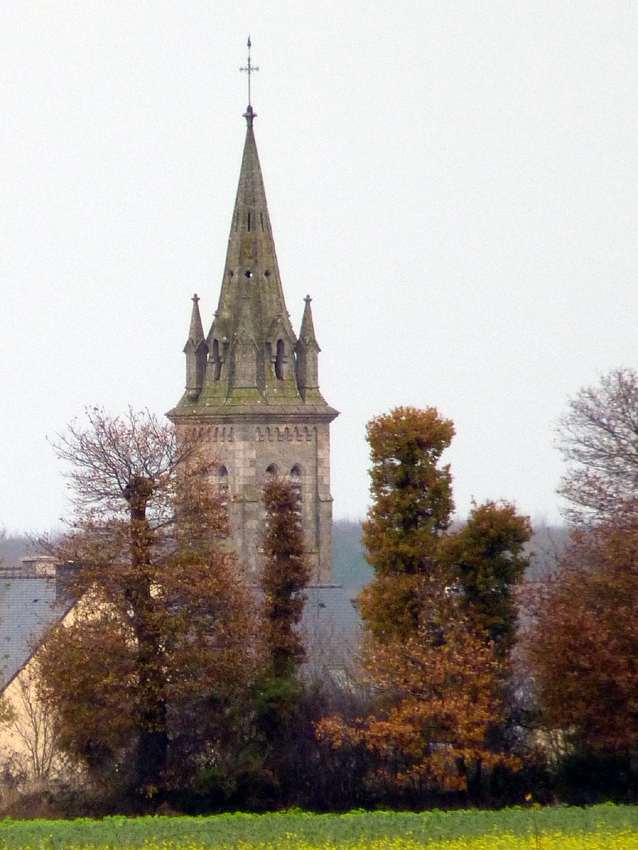
SAINT RIEUL. Côtes d'Armor. Sunday, 28th May,
1944 1530 hrs. Crash of Spitfire Mark XIV RB175 coded DW-L
and flown by Flying Officer Brian Thomas "Butch" Colgan of
610 (County of Chester) Squadron of the Royal Air Force
stationed at RAF Harrowbeer in Devon (southwest England).
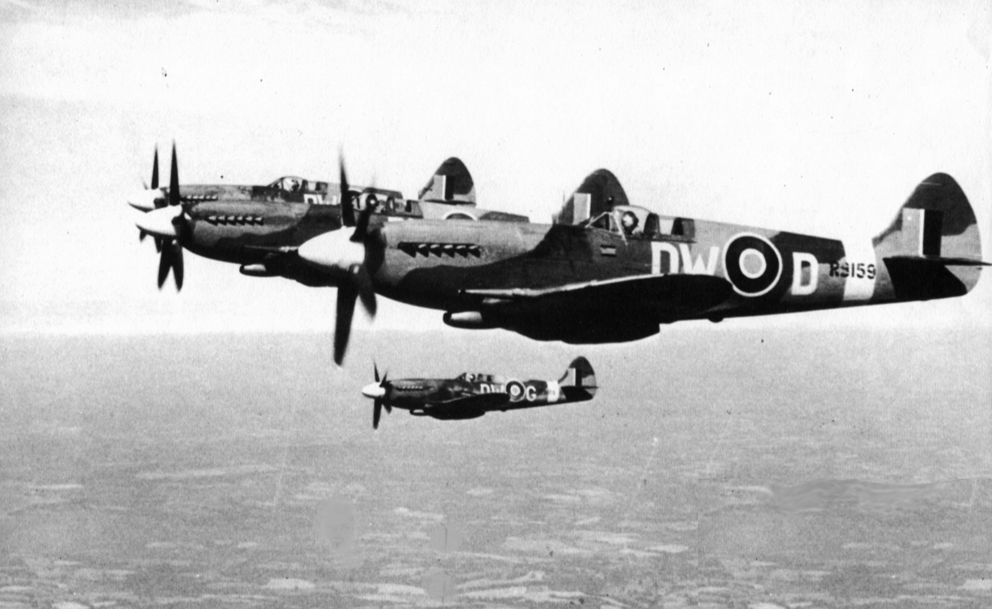
A flight of four Spitfire XIVs of 610 Squadron. Flying
Officer Brian Thomas Colgan is in one of the Spitfires
without visible markings
On the day of 28th May 1944. Flight Lieutenant Madden
and Pilot Officer Scaman had taken off at 0550hrs to make a
reconnaisance over the Aber-Wrac'h in northern Brittany with
an extension above the Narrows of Brest. Everything went
without any problems and at 0720 hrs they returned to their
base. A second mission was planned by the Commanding Officer
for the end of the afternoon. The Squadron's task was
described as ''Rhubarb 259''. ( For all RAF squadrons during
the 2 nd World War, the Rhubarb code name was used for
operations which did not have specific targets). Pilots were
to find enemy targets of opportunity and attempt to destroy
them. These would include any enemy road or rail convoys,
aircraft or gun installations.
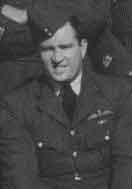 Four
pilots was selected to take part in the operation. The group
was commanded by Squadron Leader Richard Newbery (photo
left). Newbery was a highly experienced pilot and Squadron
Leader (he remained in that position until 1945) and was
later awarded the DFC, (The Distinguished Flying Cross). He
was to achieve fame a couple of months later for having
destroyed nine V1 flying bombs which had been launched from
Northern France by the Germans towards London and the Home
Counties. Flight Lieutenant Shepherd was his second in
command. They were joined by Flying Officer McKinley (who
was killed in July that year aged 23 years when a V1 blew up
in front of his aircraft) and Flying Officer Colgan. All
were experienced with many flying hours between them,
including air combat and ground attacks. Four
pilots was selected to take part in the operation. The group
was commanded by Squadron Leader Richard Newbery (photo
left). Newbery was a highly experienced pilot and Squadron
Leader (he remained in that position until 1945) and was
later awarded the DFC, (The Distinguished Flying Cross). He
was to achieve fame a couple of months later for having
destroyed nine V1 flying bombs which had been launched from
Northern France by the Germans towards London and the Home
Counties. Flight Lieutenant Shepherd was his second in
command. They were joined by Flying Officer McKinley (who
was killed in July that year aged 23 years when a V1 blew up
in front of his aircraft) and Flying Officer Colgan. All
were experienced with many flying hours between them,
including air combat and ground attacks.
After take off at 1700 hours, the four joined up over
the Channel. The crossing to North Brittany was very fast.
(The Spitfire Mk XIV had a top speed of 750 km / h). Weather
conditions were good and Sqn/Ldr Newbery, gave orders to the
other pilots over the radio. 'Take care as the enemy can
strike at any moment'. After a loop approach to Brest, the
group began to follow the railway towards Rennes. At the
same time, they checked the roads to identify any military
vehicles. Suddenly, on reaching Landivisiau, white smoke was
seen rising into the sky, indicating the presence of a
railway train. Immediately, the four British airmen prepared
to attack with great caution because the enemy rail convoys
were heavily protected, often by Flak guns mounted on
railway wagons. Frequently, these were placed at the rear of
the train and sometimes on the front behind the locomotive.
The four aircraft hit the train firing all their weapons
then described a wide loop, while climbing to escape enemy
fire. The target was hit and the train stopped in open
country.
Sqn/Ldr Newbery signaled the resumption of flight
indicating that the goal had been achieved. The flight
continued following the railway to Saint-Brieuc and
Guingamp. Just after Lamballe, further smoke was seen
indicating the presence of a second train en route to
Rennes. Squadron Leader Newbery repeated his orders
recommending great caution. Here again the train was
protected by mobile artillery.
Arrived at a place called ''Le Cas Rouge" of the town
of Plestan is a good offense.
Again, they fired all their weapons at the train. A
fuel wagon in the middle of the convoy exploded in a giant
shower of fire. The Flak wagon at the rear of the train
directed his guns at the raiding Spitfires.
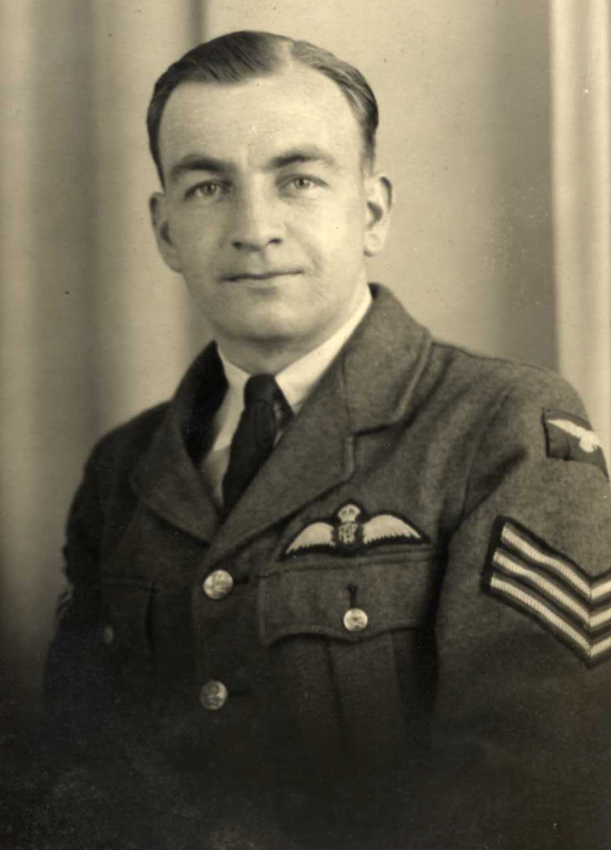
Le Flying Officer.
COLGAN Brian
Thomas
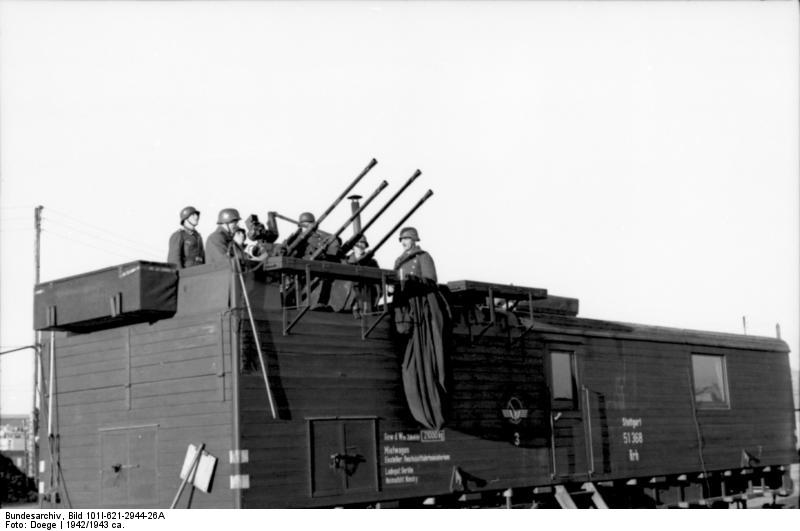
Here is a picture of the type of flak wagon that were
used on the railways
Unfortunately, during the attack, Flying Officer
Colgan reported that his aircraft was hit by shells. He was
uninjured but indicated that he would make an emergency
landing. He was too low to bail out. He left the band by
making several wing beats (read the testimony of Mr.
Pelaine). M. Joseph Hercouet: The plane fell into my field
at "Livraudais". It first struck an embankment and then slid
for some way on its underside before biting into the ground
at the end of the moor. The pilot was not injured and had
not bailed out. He was arrested in the town and became a
prisoner when he sought to make contact with the Resistance.
He asked a lady who unfortunately could not tell him.
I also recall that later that evening we heard planes
circling above us, it was almost dark. The German artillery
started shooting. We were very scared. Then we heard
nothing. The next day we were informed of what had
happened.
and began to descend towards the ground. The Spitfire
approached a large field, intending to make a normal gear-up
landing. Unfortunately it hit a bank and came to an abrupt
halt making its first contact with the soil of France in the
village of "Livraudais" in St. Rieul. After un-strapping his
seat harness and parachute, Flying Officer Colgan climbed
out of his cockpit and stepped down from the aircraft. He
rapidly crossed towards the entrance of the field and found
himself in a tree-lined road. There he met a lady to whom he
said; ''Resistance - Resistance''? The lady was a bit
surprised but indicated the direction of the village.
Unfortunately he was arrested by the Germans early in the
evening. Colgan was eventually transferred to the prison
camp reserved for airmen in East Prussia (now Poland) Stalag
Luft III at Sagan. It was here that many airmen tried to
escape in March 24th 1944. Their attempt was disastrous and
was recounted in the movie ''The Great Escape''. Colgan was
not released until the end of the war in May 1945.
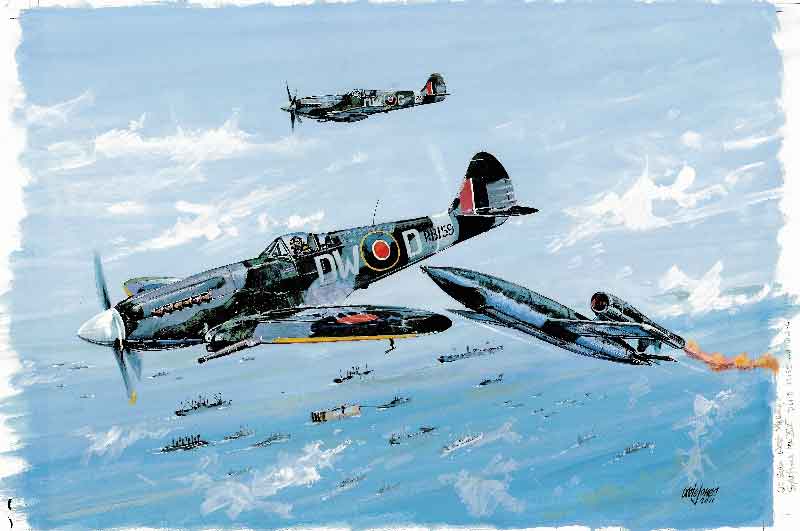
Squadron Leader Richard Newbery's Spitfire coded
DW-D
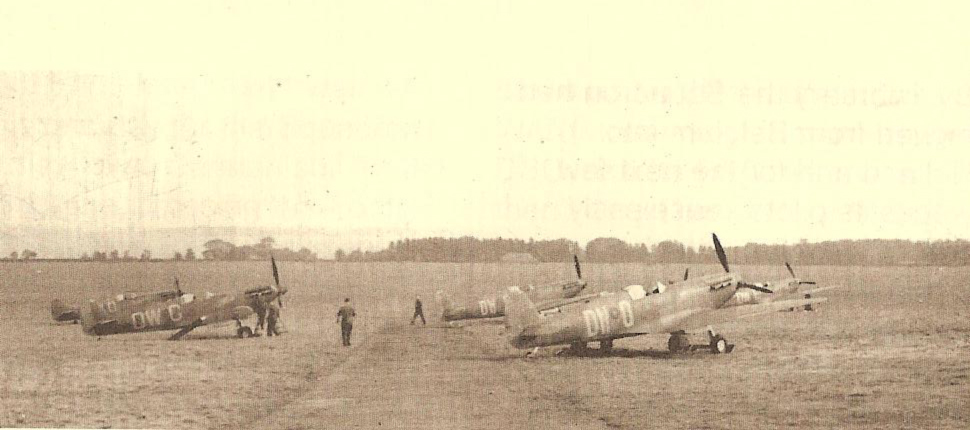
Spitfires Mark 1 delivered to RAF Hooton Park,
Cheshire (home of 610 Squadron) in north-west England in
1939
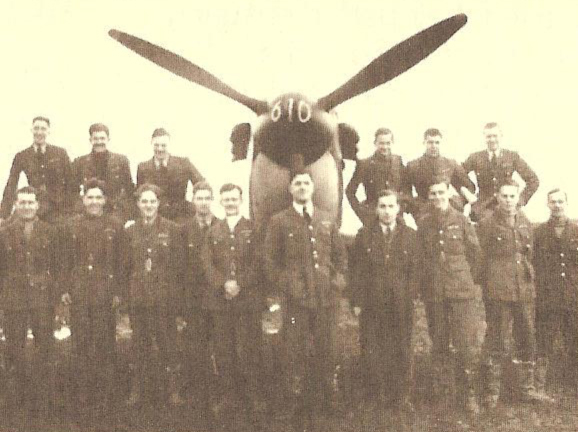
The pilots of 610 Squadron at RAF Acklington in
Northumberland in northern England in September 1940 with
their Squadron Leader John Ellis
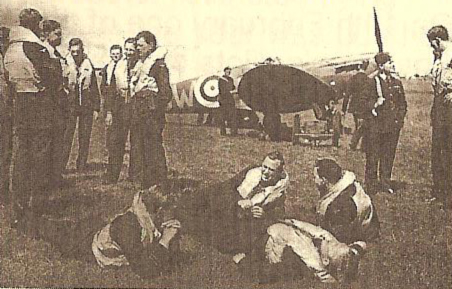
The pilots of 610 Squadron at RAF Hawkinge in Kent in
July 1940 during the Battle of Britain
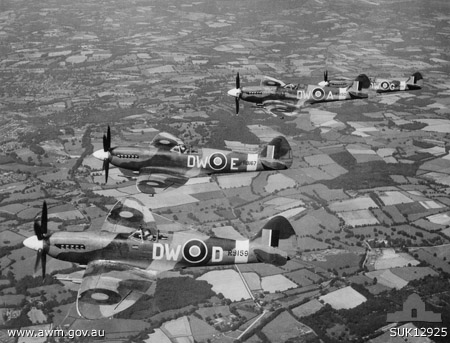
The other three aircraft returned to Harrowbeer and
announced the loss of Flying Officer Colgan. The loss to the
Squadron of such a valuable pilot was immense but the loss
of the aircraft was also problematic as it was the first
Spitfire Mk XIV to fall into enemy hands (although
eventually, 970 of these aircraft were produced 610 Squadron
was the first to receive them). It was clear that Colgan had
landed without his aircraft bursting into flames and for
this reason it was hoped that the Germans could be prevented
from recovering its advanced technology.
Immediately, it was decided to make a special sweep
with the aim of finding and destroying the wrecked aircraft.
Four Spitfires were made ready. Again, Squadron Leader
Newbery took charge with pilots Shepherd and McKinley and
Canadian pilot, Flying Officer MacFarlane. Take off was at
2125hrs in the evening and the four aircraft soon arrived in
the zone (see testimony of M. Hercouet). Intense flak was
experienced, probably from a section of German anti-aircraft
guns based at the Hague in Tramain Wood. This section had
been positioned to protect the Lamballe to Rennes railway
and was hidden in the woods the during the day. The evening
was hazy and the four pilots were unable to carry out their
mission as night began to fall. The group returned to
England. There were no further attempts on the following
days.
As always in these situations, the Germans quickly
dismantled the aircraft, loaded it into trucks and took it
away in the direction of Lamballe.
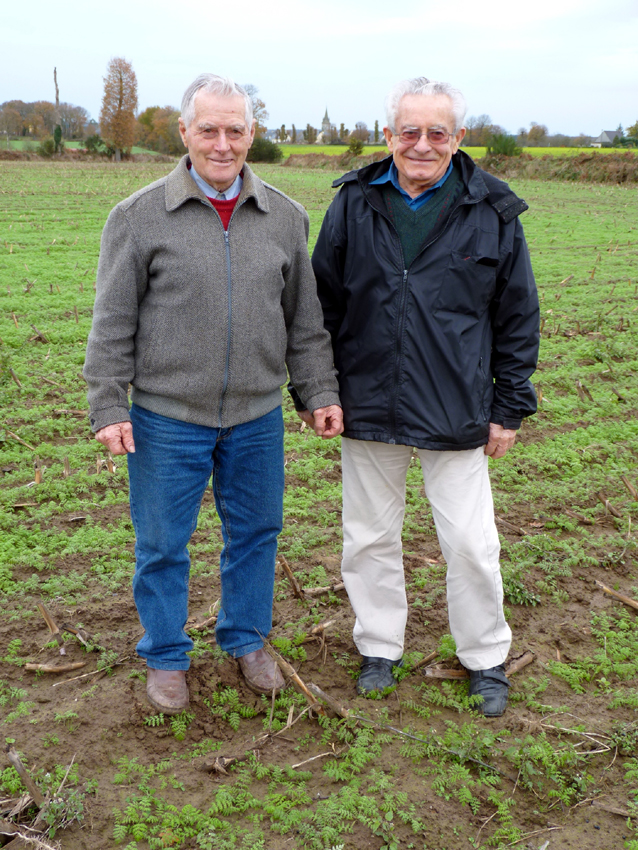
M. Roger PELAINE & M. Joseph HERCOUET
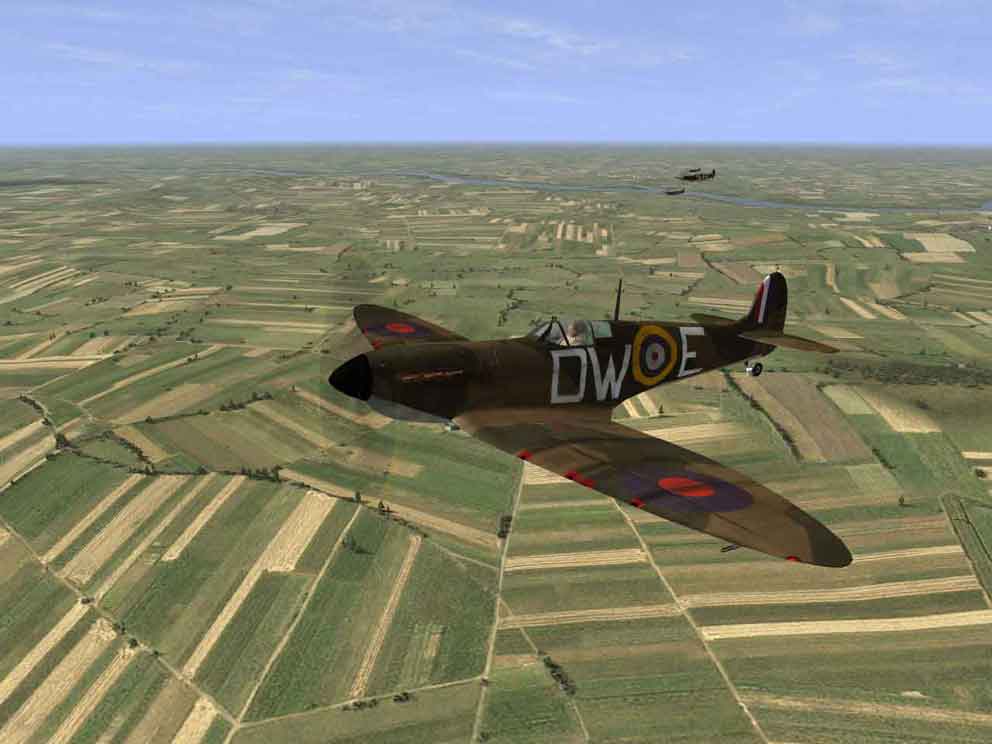 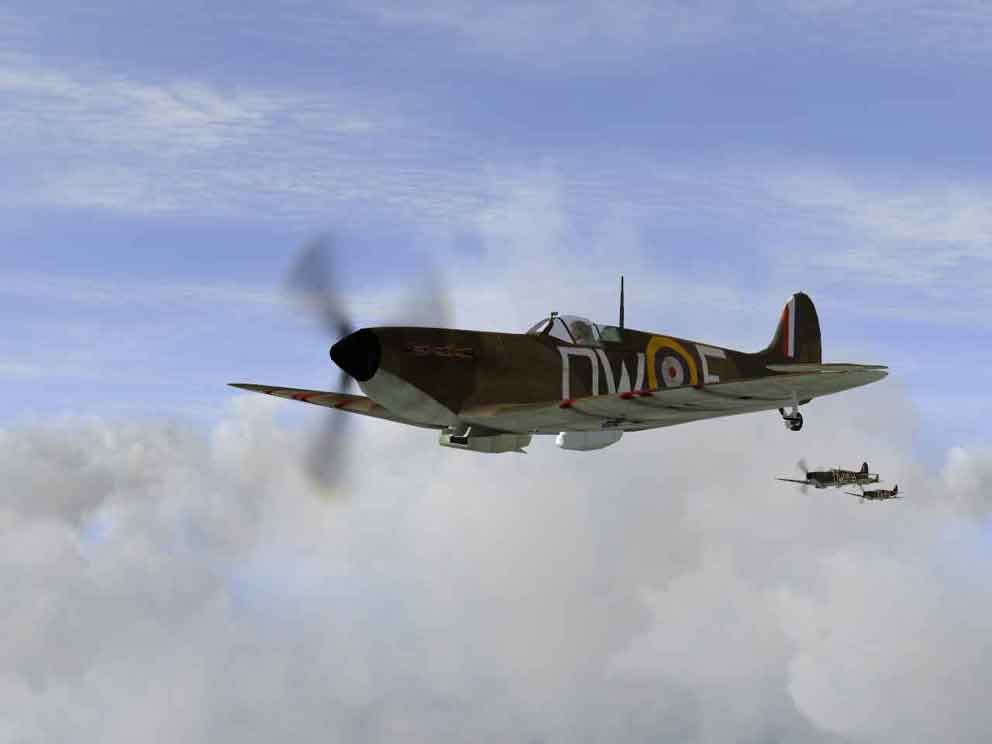
RAF Spitfire DW-E-of 610 (County of Chester) Squadron
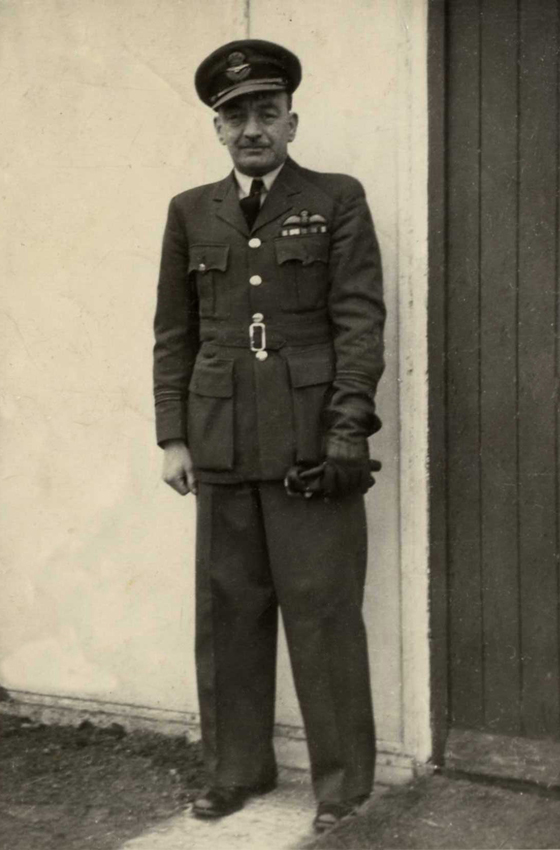 TESTIMONY
from M. Roger PELAINE: I was 19 years old. It was a Sunday.
I remember it very well. With other young people I was going
to a dance on Sunday afternoon at a nearby village. We had
arranged some entertainment for the German occupation was
very hard for everyone. We lacked everything. It was evident
that the Germans felt that things were changing and they
were more on-edge. We had to be careful. It was late
afternoon and suddenly we heard explosions. It was an attack
on a train at a place called ''Le Cas rouge'' in Plestan.
From where I was, I saw an aircraft very low in the sky dip
its wings several times before diving towards the ground.
This aircraft appeared to be in trouble. I also heard the
noise of other aircraft. The next day some said it was the
English who had come to attack the railway line. One of the
wagons in the middle of the train was full of fuel and had
exploded. The train included a mobile artillery unit that
probably shot down that plane. TESTIMONY
from M. Roger PELAINE: I was 19 years old. It was a Sunday.
I remember it very well. With other young people I was going
to a dance on Sunday afternoon at a nearby village. We had
arranged some entertainment for the German occupation was
very hard for everyone. We lacked everything. It was evident
that the Germans felt that things were changing and they
were more on-edge. We had to be careful. It was late
afternoon and suddenly we heard explosions. It was an attack
on a train at a place called ''Le Cas rouge'' in Plestan.
From where I was, I saw an aircraft very low in the sky dip
its wings several times before diving towards the ground.
This aircraft appeared to be in trouble. I also heard the
noise of other aircraft. The next day some said it was the
English who had come to attack the railway line. One of the
wagons in the middle of the train was full of fuel and had
exploded. The train included a mobile artillery unit that
probably shot down that plane.
Thanks to M. Mayor of Saint Rieul Gesbert.
Witnesses at that time M. Roger PELAINE, M. Joseph HERCOUET.
Thanks for assistance to Michael Lewis, Chairman of
610 (County of Chester) Squadron Association in Chester,
England. Stephen Fryer, president of the Association for the
Memory of the Aerodrome at Harrowbeer, Devon. Jonathan
Ives.
J.24092 F/O McFarlane, F.Norman (Canada) ('Mac Mk
III') posted from No .2. T.E.U. Tealing to 610 Sqn at Exeter
Jan '44. Attached to Rolls-Royce at Derby for engine
handling course 14/3/44. Returned to unit 18/3/44. Pictured
in a group with other pilots June/July 1944. F/O Lee and F/O
McFarlane fired at a diver and slowed it before having to
break off on reaching the gun zone. Plots faded on it
afterwards, so it was claimed as destroyed (half each).
Promoted to F/Lt 30/1/45. Died in Ottawa, Ontario
12/5/2002.
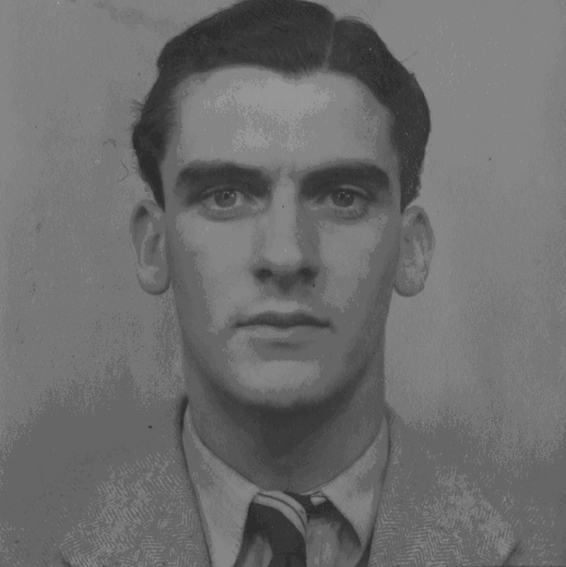 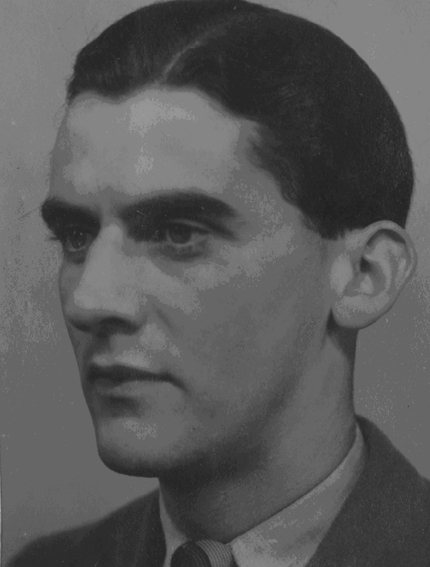 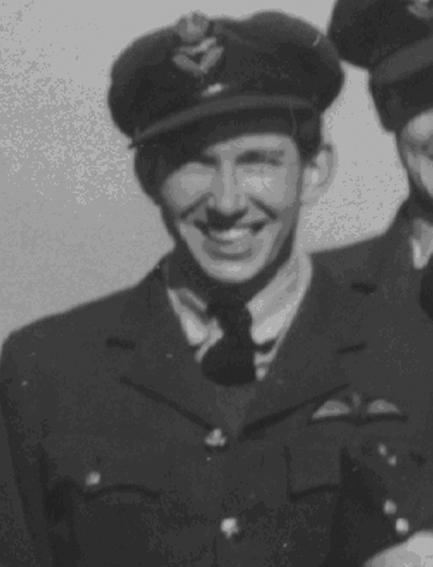 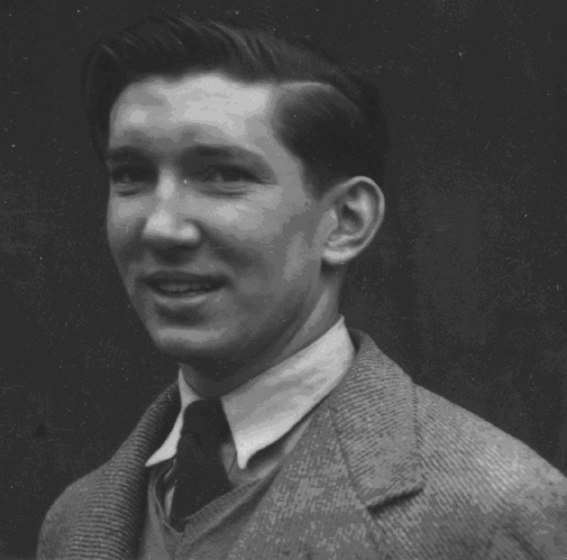
136433 F/O McKinlay, George Mercer, RAFVR ('Mac MkII')
Posted to 610 Sqn at Bolt Head from 2 TEU 4/12/43. To
Rolls-Royce at Derby for engine handling course 8/5/44.
Returned to Sqn 13/5/44. Destroyed first flying bomb shared
with F/Lt Shepherd 22/6/44, two more 7/7/44. Killed 12/7/44
(age 23). After destroying a flying bomb, his aircraft
(Spitfire XIV RB142 'DW-B') went out of control over
Newhaven. Mac managed to avoid a built up area and in doing
so lost his life. He lived at 2, Norwood Gardens, Low Fell,
Gateshead. Destroyed 4 ½ flying bombs. Son of William
and Bessie McKinlay of Gateshead. Commonwealth War Dead Div.
5. Grave 5701. GATESHEAD (SALTWELL) CEMETERY.
Contact: Andrew McKinlay
captainmac1966@yahoo.co.uk
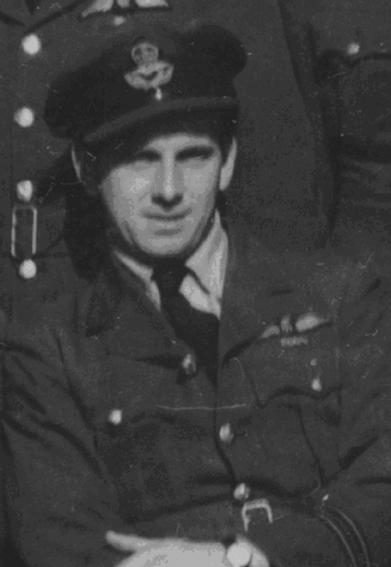
104447 S/Ldr Shepherd, John Bean DFC ('Shep') was
posted to 610 Sqn at Bolt Head in 18/5/44. C/O 610 Sqn Feb
'44 to Mar '45. Destroyed first flying bomb 20/6/44. Shared
another with F/O McKinlay 22/6/44. Destroyed another 7/7/44
flying from Friston and another 8/7/44. F/Lt Shepherd added
a further diver to his score 29/7/44. Accounted for 6 flying
bombs in total. Crashed 'DW-C' when engine cut on takeoff
28/8/44. He was awarded DFC 12/12/44.
|
